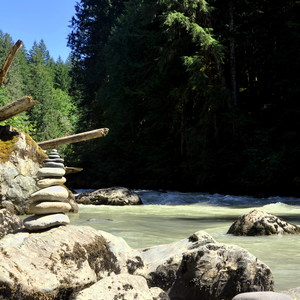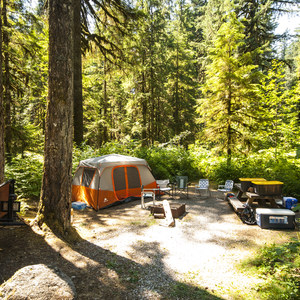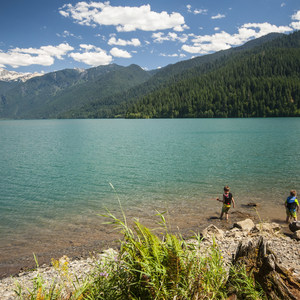Dominating Bellingham's eastern skyline, Mount Baker provides countless opportunities for crevasse alpine climbing. Second only to Mount Rainier as Washington's most glaciated peak, the mountain provides a plethora of route variations ranging from beginner crevasse travel to difficult ice climbing. As the most climbed route, the Coleman-Deming glaciers offer climbers an introduction to glacier travel with breathtaking vistas of the North Cascades. Don't be fooled by the beginner rating on this route; the 7,100-foot overall elevation gain, rapidly changing weather, and potential for avalanches and crevasse falls leave this climb suited for the physically fit and experienced alpine climber.
Beginning in a lush green timber forest, the Coleman-Deming route weaves through the predominantly fir timber stand that crosses rushing streams and passes glacier-fed waterfalls. Climbers should be prepared for a few rock-hopping stream crossings and exercise caution when the creeks are running high. Water levels are typically lowest in the early morning hours and increase throughout the day as the glaciers melt in the heat of the sun. The route emerges from the shadows of the trees at timberline, exposing breathtaking views of the fractured glaciers on the andesitic stratovolcano. Passing through fields of magenta paintbrush, lupine, and yellow aster, the trial continues to push up the ridge to the base of the Coleman Glacier. Once you finish roping-up, continue as the route sets off past giant, delicately stacked seracs and up to the ridge dividing Deming and Coleman glaciers. After making the last strenuous push up the ridge and through the steep Roman Wall, climbers emerge on the flat top leading to the snow-crowned summit at 10,781 feet.
For climbers looking for a two-day climb, the route presents a few basecamp options. Low camp at the base of the Coleman Glacier provides a shorter pack in and dry ground to erect camp in the summer months. For the more ambitious overnighter, roped travel to cross the crevassed glacier to the spine of Heliotrope Ridge provides a true snow camping experience. Beware of crevasses and the moat between the glacier and the rock face of the ridge, as both pose a fall risk. Both camp options afford breathtaking views of the summit block and the jagged peaks of the Cascade Range to the north.











Comments
Sign In and share them.